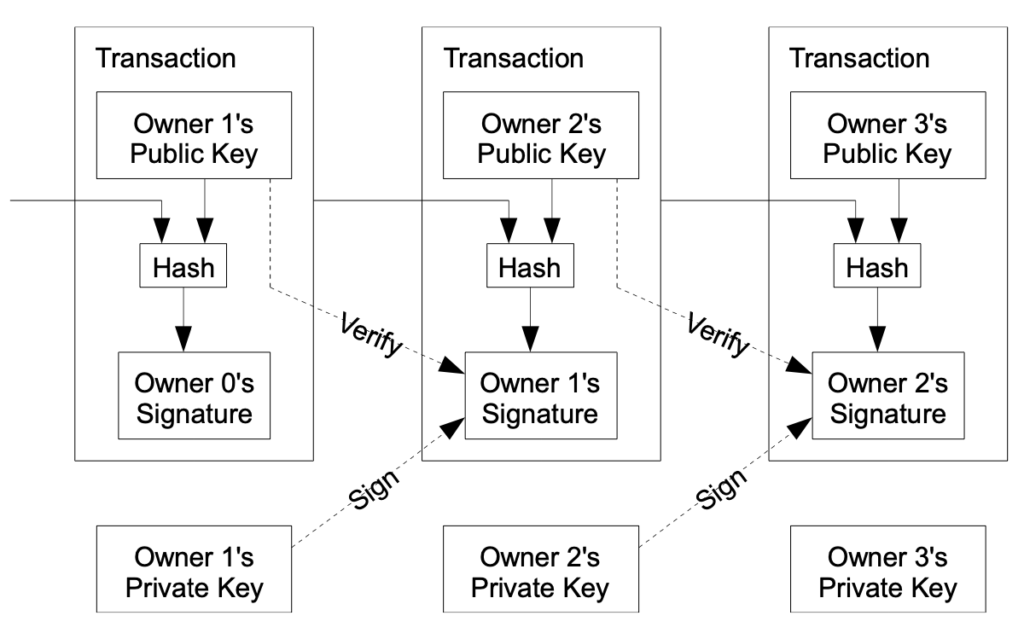On Oct. 31, 2008, a mysterious person or group using the alias Satoshi Nakamoto released the white paper “Bitcoin: A Peer-to-Peer Electronic Cash System.” Satoshi’s nine page document describes what would become the first widely adopted decentralized digital cash and marks the beginning of cryptocurrency’s ascension in global economics and culture. Since then Bitcoin has grown to a market capitalization of $324B at the time of this writing, while sparking spirited global debate on economics, privacy, technology, politics, the role of states and their durability. Depending on your worldview Bitcoin’s emergence has either coincided with or instigated a wholesale referendum on global asset value, while challenging the monopoly on currency issuance. Perhaps no single recent invention has demonstrated broader potential global impact, attracting controversy proportionate to its promise.
Naturally, Bitcoin also attracted imitators. Many. In fact CoinMarketCap reported 21,910 cryptocurrencies with a total market capitalization of $850B as of December 2022. When it became possible for anyone to create their own currency by simply modifying some code, the allure of anointing one’s self chairman and proprietor of a personal central bank became too great for many to resist. Some were drawn to the challenge and thrill of “improving money”, but many were fueled by greed or ignorance, failing to distill or apply Satoshi’s wisdom, iterating away from Bitcoin’s real value and creating Frankenstein coins. The results have been predictably poor, with thousands of psuedo-fiat currencies minted as the crypto industry capitalization crested $3T, before falling precipitously and decimating over $2T in capital. All the while, “Bitcoiners” offered ominous warnings from the sidelines, pleading as if street corner preachers to abandon these false idols and embrace the teachings of Satoshi. Revolted (or perhaps driven) by Bitcoiners constant insistence that these Bitcoin alternatives were nothing like Bitcoin and destined to doom, new projects offering claims of improvements on Satoshi’s design sprung up almost daily, claiming to have bettered Bitcoin by overcoming it’s shortcomings and replacing primitive machinery with new, improved parts. Bitcoiners were quick to classify these projects into 2 categories; those that have failed, and those that will fail.
Why are Bitcoiners so adamant in their singular support of Bitcoin? What makes them so quick to label all other projects “scams”? In this paper we will take a moment to start from the beginning, the very very beginning in fact, and review only the abstract of Satoshi’s famous white paper to glean a better understanding of the most successful cryptocurrency to date, appreciate it’s logic and disambiguate between “Bitcoin and everything else”. This essay could easily be an entire book, as many have been written on the topic, but instead of creating a comprehensive manual of Bitcoin, our goal here will be to learn as much as possible from the absolute smallest of passages written by Satoshi. In other words, this is what anyone building in the space should know about Bitcoin and cryptocurrencies if they bothered to read just the first paragraph of the most important writing on the subject.
This is not to say that Bitcoin is the only valid cryptocurrency, but rather insist that for a cryptocurrency to be valid it should fully absorb the beneficial features of Bitcoin and understand the decisions Satoshi made. It is my view that the world is on the precipice of sweeping tokenization of all assets, and I have seen in my own lifetime how progress often abstracts principles, obscuring the rationale and motivation for early designs that buttress evolution. If we are to move forward with maximum efficiency and broad social benefit, we are compelled to closely analyze Bitcoin as we proceed to “Tokenize Earth”.
Just The Abstract.
At the start of Satoshi’s short paper- which at only 9 pages includes an entire page dedicated to references and three quarters of a page listing probabilities of a successful Bitcoin network attack- there is a short passage labeled “Abstract”, which I believe has been crucially under-appreciated. Its existence itself is curious- was it really necessary to include a short abstract of such a short document? Was Satoshi’s intention to list the most crucial concepts in this preamble? I’ve come to question: could the breath of Satoshi’s message, the ethos of cryptocurrency and the guardrails for safely building in this space be summarized in the first 8 sentences of this white paper?
Today we will inspect the original white paper as a starting point for understanding not just Bitcoin, but cryptocurrency generally, and begin to build on this analysis throughout Tokenize.Earth to inform best practices for ethical and productive innovation in the web3 space. We will focus intently on the abstract as a dense summary which unlocks many of Bitcoin’s principles, and examine how they protect individuals from the scourge of manipulation and fraud that has become the rule rather than the exception in the crypto industry. Together we will balance reverence for Bitcoin’s genius with the anonymous author’s obvious desire to rescue the reader from the pitfalls of dogma, cultish worship of personalities and blind greed. If you are interested in tokenization, my hope is this analysis can serve as a tool to crystalize your own thinking and improve your token design.
Cash?

Before we dive into the abstract itself, its should be noted that the paper is after all titled “A Peer-to-Peer Electronic Cash System”. Why did Satoshi use the word cash, as opposed to “money” or even “monetary system”? After all bitcoin.org, the website referenced in the actual white paper, describes Bitcoin as “an innovative payment network and a new kind of money” in large font at the top of the home page. Bitcoin.org, an organization seemingly carrying on the gospel of Satoshi with faithful zeal doesn’t call it a new kind of “cash”. There are substantial, important differences between cash and money, and to complicate the discussion further, it can also be argued that bitcoin is a new kind of money, currency and cash.

Money is an intangible store of value. It exists in the abstract, generally a ledger in modern times. Currency is tangible, and not a store of value, but rather the tool we use to transact. Cash is money in the form of notes/bills or coins but not checks, or until Bitcoin, electronic transactions. Cash is issued by a government, Bitcoin has no central issuing authority. You can convert money to cash by withdrawing it, but Bitcoin is entirely digital and has no physical form. Money is also controlled by governments, who can increase supply as they deem necessary. Bitcoin’s fixed supply of 21M Bitcoin is neither issued nor controlled by a government or central planner. Bitcoin is indeed a new kind of money, currency and cash. So why did Satoshi decide to use the word cash?
In my view there is a profound reason Satoshi references cash. Nakamoto has inverted the logic of monetary systems. Historically, money has emerged as a “top down” tool, whereby governments create a monetary system, issue currency and lastly make cash available for use in the economy, typically through banks. The state’s issuance of currency holds great powers, including the right to increase or decrease money supply or change monetary policy altogether. Bitcoin’s monetary policy and total supply is fixed, and Bitcoins are initially created as rewards paid to a distributed, permissionless network of miners for servicing demand on the Bitcoin network. The existence of any given Bitcoin is therefore the result of demand for use of the network, not the state’s decree, whim or financial necessity. Many crypto projects ignore this detail, instead instantiating currency like a state by minting either a fixed or unlimited supply of coins at the onset of the project, then subsequently “creating” demand for their token. Satoshi focuses on “cash” because it is the network transactions that mints the money, rather than the money facilitating transactions. This inversion separates currency and state, and creates money supply when commerce demands it.
There is also more to the idea of cash than technical definitions, and I believe some other innuendo in Satoshi’s choice of the word. Taken in whole, there is a certain simple romance that peers out from behind the white paper writing, a paradoxical leveraging of futuristic technology as a return to less complicated times. While old fashioned cash provides anonymity, which regulators have seized upon as evidence that Bitcoin exists to abet criminal enterprise, the anonymity of electronic cash is much different than that of the bills you may be carrying around in your wallet today. Electronic cash is traceable as it’s recorded to a public ledger, but can nonetheless retain the same metadata as physical cash- which is to say none. Credit card transactions can not make the same claim. Both electronic cash and physical cash escape the prying eyes of banks, marketing companies, data brokers and intermediaries. A cash transaction is an uncomplicated, untraceable affair that begins and ends with the exchange of value. Electronic cash is cash for the internet age; eliminating the costs, both economic and esoteric, that accompany the need for intermediation. The Bitcoin network is a sophisticated piece of digital technology designed to approximate the most simple analog monetary transaction. Like cash, its form factor-a purely digital asset- allows the owner to self custody.
Satoshi’s 10 Crypto Commandments.
“A purely peer-to-peer version of electronic cash would allow online
payments to be sent directly from one party to another without going through a
financial institution”
The very first sentence in the paper makes clear that Bitcoin is designed to take direct aim at financial institutions, which are colored as rent-seeking value extractors in the document. It’s no wonder then that nearly every financial institution has offered scathing indictments of Bitcoin, dismissing, disparaging and misaligning it at every opportunity. Frankly, I don’t blame them. Bitcoin started this fight by declaring explicit desire to disintermediate banks and reimagine payments. Every day we’re treated to another target of disintermediation expounding on the defects of Bitcoin, generally making claims that demonstrate no real understanding of the network. In 2017 Jamie Dimon, CEO of JP Morgan Chase famously said “You’re wasting your time (with Bitcoin)! Virtual currency, where it’s called a bitcoin vs. a U.S. dollar, that’s going to be stopped”. In USA where money is free speech, that seems unlikely, but the soundbyte was not, I believe, offered seriously.
Given the abundance of misinformation, disinformation and biased opinions, it’s imperative that anyone with interest on the subject examine the building blocks of Bitcoin, the sort of amino acids that click together to form its DNA, and gain a firm understanding of the technology. The abstract summarizes this blueprint, providing a shortlist of Bitcoin’s design elements integral to the formation of any durable and equitable cryptocurrency. I argue that there are ten key ideas provided in the abstract. I note that while I have my own thoughts on the foundations of sustainable cryptographic currency and web3 systems, this analysis is limited to only the writings of Satoshi Nakamoto, exclusively within the white paper. These ten concepts comprise what I describe as “Satoshi’s 10 Crypto Commandments”, derived by analyzing each of the mere 8 sentences found in the abstract, in the order they appear. While not exhaustive, and therefore not quite commandment-like in the biblical sense, these ideas provide crucial insight. There could easily be 20 or more “Crypto Commandments”, however I believe these 10 represent what Satoshi Nakamoto wanted the reader to know immediately upon reading the first paragraph, originally released 14 years ago. The names of each “commandment” are directly taken from Satoshi’s writing. Satoshi’s 10 Crypto Commandments are:
- Facilitate Peer-to-Peer Transactions: Direct transactions are integral to commerce and community.
- Require Digital Signatures: A digital signature must be used for online, trusted transactions.
- No Trusted Third Party: Third parties solve the problem of trust while spreading the need for increasing trust. They must be eliminated completely.
- Eliminate Double Spending: A network must eliminate double spending to prove worthy of recording, executing or custody of valuable digital assets.
- Build Peer-to-Peer Networks: Peer-to-peer transactions require a peer-to-peer network.
- Leverage Hashing: Timestamped digital signatures must be used to both sign transaction hashes and form the subsequent hash, creating an unbroken chain.
- Only Use Proof of Work: A network secured by any other means is susceptible to manipulation, either by monied interests or because it will inevitably become a fiat system.
- Longest Chain Wins: This mechanism provides simple, objective dispute resolution to determine which branch, and therefore which rules governing the blockchain, persists.
- Make Data Immutable: On-chain data must neither be alterable, nor “own-able”.
- Decentralize The Network: Anti-fragile networks that self organize and move quickly have no central planner. It is the whole of the system design that creates decentralization.
We will inspect each of the 10 principles contained in the abstract below in greater detail.
Peer-to-Peer Transactions:
The first words of the white paper begin “a purely peer-to-peer version of electronic cash”. Peer-to-peer transactions lead the discussion of Bitcoin because they’re critical to a functioning, civilized society. It is in trade, the direct exchanging of value and rearranging of asset ownership, that the potential of our species is demonstrated, creating powerful synergies and network effects that have fueled all human advancement to date. Intermediating these transactions is profitable but detrimental to humanity, as it establishes a tax in the form of machinery necessary for individuals to organize, direct, and optimize society’s path forward as an intelligent network. The basic, unfettered process of self organization is fundamental to organic life, and can be seen at work in the lives of “simple” organisms such as fungus. In a now famous study, researchers introduced fungus to a petri dish with food placed at the location of cities on the Tokyo map; the fungus collaborates, spreading out to map many possible configurations and then dying away to highlight the shortest routes between cities and the most efficient overall system map. The fungus model is then compared to the human generated map, which is encumbered by politics and artificial inefficiency, revealing the fungus is able to produce better results with no central planner, no architect or oversight committee.


This system organically marshals the resources necessary to make decisions that provide system-wide benefits. None of this would be possible if each node was forced to deliver data to a central processor to arbitrate and impute decisions with singular, flawed intelligence. It is precisely the peer-to-peer transaction that makes possible an optimized network at speed. What’s more, the ability to transact directly is a fundamental freedom that powerful interests have sought to undermine throughout history. Where once it was necessary to trust third parties as intermediaries in the movement of goods, services and capital across great distances and among total strangers, Bitcoin has rendered such third parties not just unnecessary, but counterproductive.
Digital Signatures:
“Digital signatures provide part of the solution”
Satoshi Nakamoto
On some level it is impossible to separate a Bitcoin transaction from the underlying encryption. In Section 2 “Transactions” of the white paper, Satoshi summarizes this clearly: “We define an electronic coin as a chain of digital signatures. Each owner transfers the coin to the next by digitally signing a hash of the previous transaction and the public key of the next owner and adding these to the end of the coin”. Bitcoin is a cryptographic coin made of cryptographic signatures. Digital signatures are crucial to a blockchain, and therefore any cryptocurrency, because they provide a record of transactions that link to the transacting parties and act as the raw material for the transaction hash which authenticates the transaction itself. The digital signature aids in establishing provenance and transaction verification, and therefore must be publicly broadcasted. Oftentimes when people speak of anonymity, they misunderstand that all transactions on the Bitcoin network can be viewed by the public and include the public key (wallet address) of each party which is used to sign the transaction hash. Only someone with the private keys (password) for a public key (wallet address) can sign a transaction; so if you know someone’s wallet address you can easily verify they signed a transaction. As an aside, this certainly makes the idea of using a public ledger for illicit behavior a poor decision. It also means that a private blockchain ought to verify the identity of network participants, because if the network doesn’t explicitly benefit from anonymity as is the case with public chains, it is surely disadvantaged by neither enjoying the sanitizing benefits of the public ledger nor the security of private identity disclosure of transacting parties.

Bitcoin: A Peer-to-Peer Electronic Cash System, page 2: Transactions Diagram
The hash each owner signs is itself the product of a hash function- a process that takes as inputs the most recent transactions prior to confirmation, timestamp and reference digits from the previous block and returns a string of a fixed size, such as “j9hg48n8io087b4399899v722feks0v0”. This string can be decrypted to reveal the identifying data of the transaction, which are the inputs used to produce this hash. But in order for a Bitcoin miner to earn Bitcoin, they must first arrange the hash using the unique transaction inputs, and output a hash string that begins with a certain amount of leading zeros. Doing so expends meaningful computational power, and as more Bitcoin are created, the amount of leading zeros increases, making it still more difficult and time consuming to create more Bitcoin as supply approaches 21M Bitcoin- which is the maximum supply of Bitcoin that will ever exist. Currently hashes begin with no less than 17 leading zeros.
“What is needed is an electronic payment system based on cryptographic proof instead of trust,
allowing any two willing parties to transact directly with each other without the need for a trusted third party”Satoshi Nakamoto
No Trusted Third Party:
Satoshi expends proportionately great energy to underscore that trusted third parties create perverse outcomes. It’s not simply an issue of fees paid, but the self perpetuating cycle of trust they spread and magnify, not to mention the violations of trust we routinely suffer. Certainly the recent FTX debacle underscores this wisdom.
A system with some quantum of trusted third parties will eventually be controlled by those third parties, who will work to retain their privileged position between peers. Oftentimes when that position is compromised, the trusted third parties betray those who entrust them with their valuables. Most bristle at the seeming animosity Satoshi and the crypto community at large holds towards trust. They confuse the desire for trustless systems with the belief that these systems seek to destroy the existence of trust. On the contrary, when trust is wholly unnecessary, individuals can choose whom or what to trust. In the absence of trustless systems, trust is a necessity. It seems evident trust should not be required to perform financial transactions, to enjoy the synergistic and society advancing activity of small, casual exchanges or conveyance of big ticket items. Trust should be a choice, not a tax.
Web3 systems radically reduce or completely remove trusted third parties by replacing the need to trust with observable, objective data. The lack of trust sanitizes systems with the purifying power of transparency. If there’s no trusted third party, confidence must be built with a preponderance of data and standardized, purposely inflexible protocols. Bitcoin provides no special treatment and offers no exceptions; everyone transacts identically, with the same requirements and disclosures every time a transaction is processed. This standardization allows for simple and easy public query of the blockchain to inspect and audit transactions, reinforcing confidence in Bitcoin networks fairness and data authenticity. Any blockchain that lacks this feature will fall prey to either fraud or mandatory “trustfull transactions”, which through time devolve into gated ecosystems awash with rent seeking intermediaries. When trust exists in a system, it will metastasize until it defines that system.
Double Spending:
Double spending occurs when the same cryptocurrency is used more than once. This could theoretically be accomplished by a Bitcoin miner front running the network and submitting a fraudulent block before the network catches up and recognizes the fraud. This has never happened on Bitcoin, since such an attack would require coordination with other miners and the ability to front run the network, which are individually unlikely and jointly highly improbable. Satoshi outlines the vanishing small probability of such an attack on pages 7 and 8 of the white paper.
Given that double spending is thus far non-existent, and that each transaction hash is signed with digital signatures, Bitcoin provides reliable provenance and chain of title, making the transactions themselves worth users including on the blockchain, which in turn drives mining incentives to include the transaction into blocks, powering a virtuous cycle that has propelled Bitcoin with no interruptions whatsoever since 2008. Any chain that fails to arrest double spending is doomed for obsolescence, as it can not reliably include data on chain of import or economic value.
Peer-to-Peer Network:
A network that removes the governor of rent seeking is free to grow in bounds, with fewer resources than otherwise necessary. Bitcoin has never wasted a nanosecond coordinating a committee, allocating capital, or developing a marketing plan. It is perpetually and exclusively executing code. It can not be paused, stopped, or delayed because when any portion of the network stops or slows, the balance of the network accelerates to reap the benefits of larger incentives. Bitcoin is the living, breathing “flat corporate structure” conceptually discussed for years. This structure was likely not previously achievable in the absence of cryptocurrency; bitcoin, the token used to reward work on the network gives miners incentive to perform work whenever they wish, wherever they are, with guaranteed payment. As a peer-to-peer network, Bitcoin has no employees, salaries, insurance, office, administrative or operating expenses. Blockchains run as a traditional business with 1 or more employees may be profitable, but they are not a purely peer-to-peer network in the same way as Bitcoin. Bitcoin does not have p2p components- it is entirely peer-to-peer.
Hashing:
The Bitcoin network begins with a timestamp server taking a hash of the blocks to be timestamped and broadcasting it publicly. The hash proves the data existed, the transaction happened, and includes the hash of the previous timestamp. Because each hash includes the timestamp of the previous hash, a chain is made which makes it obvious if the network is tampered with, as any manipulation would break the chronology of timestamps. This chronology is the “chain” that blockchain references.
The hash is created by a mathematical function that merges the data signature with time itself. If you allow yourself some romance, you can easily view this as alchemy, making tangible the intangible concept of time and directing it forwards. Bitcoin uses the arrow of time as the forcing function that makes transactions irreversible (ie immutable) by assigning singular, unique hashes to each recorded moment (transaction). Whereas time is cyclical, with each minute passing in 60 second intervals, each hour in 60 minutes, each day in 24 hours, repeating itself ad infinitum, Bitcoin is a linear embodiment of the arrow of time which moves in only one direction with no cyclical repitition.

Satoshi saw in the humble hash the ability to serialize data, time and consensus using math, encryption and open source software. These concepts previously existed in disjointed spaces, but it was the merging of the hash to proof of work, decentralized voting, absolute maximum supply, digital signatures, immutability, encryption and currency that unlocked their value. A network must clearly evidence authenticity. The stamp of authenticity must be broadcast, impossible or nearly impossible to counterfeit; the hash serves this role dutifully on the Bitcoin network.
Proof of Work:
Proof of Work features prominently in Bitcoin’s value, since the creation of each new Bitcoin requires expending significant computational and electrical resources to solve an arbitrary equation, which in turn confirms and secures transactions. The first miner to solve the cryptographic equation wins the right to add a block to the blockchain, it is then authenticated and she is paid in Bitcoin for her work.
This proof of work scheme can only be disrupted if a bad actor takes over at least 51% of the network and its computing power, “forks” the chain by creating a new protocol, splits the chain in two, and supports both chains with the requisite computing power to maintain the transactions. Alternatively, a Proof of Stake system emerged to minimize the electrical and computational demand of maintaining a blockchain. Under this scheme a miner need only “stake” capital to be awarded the right of confirming blocks. If the miner’s blocks are inauthentic, she loses her stake, providing a powerful incentive to get it right. But if she wishes to overtake the chain, she can do so by staking sufficient capital and supporting both sides of the fork financially. Satoshi established proof of work to make the Bitcoin network incorruptible by requiring malfeasance not just be financially prohibitive, but also logistically challenging.
Longest Chain:
“The longest chain not only serves as proof of the sequence of events witnessed, but proof that it came from the largest pool of CPU power”
Satoshi Nakamoto
Among the many simple solutions Satoshi proposes, the scheme used to determine which chain is the “correct” chain is perhaps the simplest. For rules in decentralized systems to be enforceable, they must be abundantly simple, ideally binaries with absolute, empirical qualification. The longest chain is the right chain, as it inherently has achieved the highest degree of consensus. It would have been easy for Satoshi to make this difficult, engineering complicated mathematical formulas to reveal the probability a chain was attacked by scrutinizing minuscule parameters that through time would certainly mislead. The longest chain solution is not only the correct choice, it is a framework for building fast-moving, uncomplicated organizational logic.
It’s also interesting that in the application of the longest chain rule, the blockchain becomes almost self aware -the chain is used as its own record of authenticity, as it “serves as proof of the sequence of events witnessed”. It has the transactions, therefore it is correct.
The fact that the longest chain also requires the greatest CPU power is a direct consequence of the proof of work consensus mechanism, illustrating how the ten commandments work in unison as complimentary concepts. Everywhere we look, we find Bitcoin’s design to be purposeful and wise. This is not to say that the architecture could not be improved, but that improvement would not be a simple affair, as many failed blockchains demonstrate.
Immutability:
“The network timestamps transactions by hashing them into an ongoing chain of hash-based proof-of-work, forming a record that cannot be changed without redoing the proof-of-work”
Satoshi Nakamoto
As we will see with the term decentralization, the word immutable doesn’t appear in the white paper either. Both concepts are offered as vital features of Bitcoin, but neither is achievable in absolute terms. Instead they are approached by degrees perpetually along an asymptotic trajectory. Bitcoin strives to achieve perfect immutability, but at the moment provides probabilistic protection from altering of the ledger by making such an endeavor costly and time consuming. It’s exceedingly unlikely any person or organization would redo the proof of work to change the on chain data, because it’s a fantastically expensive pain in the ass. Similarly, the system is designed to so that “nodes can leave and rejoin the network at will”. This is made possible because the entire blockchain is available to every node; there is no central database locked behind an owner’s private keys.
We learn from this that Satoshi’s approach to “rules” is to not have any. Instead, the network design makes acceptable or desired behavior simple or profitable, and undesirable behavior complicated and expensive. The network doesn’t “break” if someone attempts to undermine it; if they succeed their victory will be subject to referendum 24 hours a day for perpetuity, with every subsequent block. But financing the endeavor will be costly and offers a low probability a bad actor will profit. This approach is not just practical, but a byproduct of a decentralized design; if there are no central planners there are also no mediators to adjudicate issues that arise, so the design must allow for seamless, real-time conflict resolution while appropriately disincentivizing “crimes”. When we see a network whose leadership successfully adjudicates conflict, we see in that chain a complete failure of design. Eventually the same people or organizations that resolve these issues will corrupt the integrity of the network or make an unpopular decision leading to mutiny.
In short, Satoshi replaces rules with structure. The design structure of Bitcoin is practically speaking immutable, which in effect makes the network immutable. This immutability importantly extends to the rewards structure, providing network participants with a reliable rubric that compels their investment and prolonged participation. Users in turn have confidence the data will persist, and gladly pay miners to include it on the Bitcoin network.
Decentralization:
The majority decision is represented by the longest chain, which has the greatest proof-of-work effort invested in it
Satoshi Nakamoto
The word “decentralization” is not mentioned once in the white paper. As far as we can tell, the concept was applied to Bitcoin upon inspection of its architecture, but Bitcoin wasn’t designed to fulfill the popularized (and largely undefined) concept of decentralization we’ve come to commonly discuss in cryptocurrency debates. This is to say that Bitcoin is perhaps the archetypal model of decentralized cryptocurrency design, and it has come to define decentralization as opposed to the reified construct of decentralization defining Bitcoin. In each of the 9 sentences of the abstract, a feature, condition or effect of decentralization is referenced directly or obliquely. There is no mention of committees, representatives, delegates, subsidies or arbiters. The sum of every design decision is a network that exists at the pleasure of no one, at the mercy of market forces, for perpetuity. While the definition of decentralization remains imprecise, we can take from each sentence of the abstract a concept that supports the notion that a system is decentralized, and taken in whole admit that the system is well designed to resist individual agendas and network directed hostility.
Nodes always consider the longest chain to be the correct one and will keep working on extending itSatoshi Nakamoto
Satoshi Nakamoto
Rather than creating an organizational structure, decision process and arbitration protocol, Satoshi gives the responsibility of shepherding Bitcoin to the miners, who vote on the network every single block. Each miner votes fairly with electricity, or as Satoshi puts it “proof-of-work is essentially one-CPU-one-vote“. Proof of work gives tangible value to the mining process, expressed as Bitcoin (the currency), which also represents a vote to continue the chain with each every passing ballot on each block. Here we see again that the network logic puzzles together, with each individual design attribute supporting the other.
Bitcoin’s successful eradication of central authority is monumental. Central planners are prone to corruption, poor and politically motivated decisions, and often slow down progress in larger systems. Everyone knows precisely how Bitcoin will behave operationally at all times, and a purely free market discovers the clearing price for each Bitcoin every second of the day. This provides participants confidence that they can make informed decisions and their currency will not be subject to confiscation through debasement by increased supply, or unexpected shifts in monetary policy.
It is precisely this notion that a currency can be effectively managed by a central planner that Bitcoin rejects. Well-meaning architects of competing systems may not have ill intentions, but undoubtedly think themselves wiser than markets. They justify a design that provides value-altering monetary control by reasoning it’s necessary for the survival of their improved currency, while Bitcoiners instead posit Bitcoin’s value is self evident, the product of market based behavior. Bitcoiners make no assertion that Bitcoin must persist, or that it is itself important, but rather that to the extent Bitcoin exists it has survived the brutality of markets and demonstrated important value on its own merits. Furthermore, no central planner has the capacity to confiscate or distribute value, freeing the network from bias and making it exceptionally fair. This concept is central to Bitcoiners insistence that most competing cryptocurrencies are simply fiat of another name.
Why Bitcoin Matters
Satoshi provided a proven, trustless, electronic, peer-to-peer payment system built on a currency with no central bank. It empowers everyone to “be their own bank” and establishes a form of modern sound money that transcends politics, states and monetary manipulation. As the first widely adopted cryptocurrency, Bitcoin demonstrated that digital ownership was possible, inspiring the tokenization of assets- at first through fungible tokens (ERC20), and subsequently through non fungible tokens (NFT). In the United States, the Security and Exchange Commission (SEC) concluded Bitcoin is not a security, owing to the fact that neither Satoshi Nakamoto nor any other individual or entity controls the digital asset or network, reinforcing Bitcoin’s decentralized architecture and paving the way for it to be freely and legally traded in the world’s largest economy and beyond. While Bitcoin has inspired myriad cryptocurrencies, there has not yet been any digital asset issued with equivalent decentralization and durability; Bitcoin can not be “paused”, stopped, altered, and in fact doesn’t even have a marketing budget. Bitcoin is so radically decentralized and self organizing it’s often compared to a financial virus unleashed for good across the world’s computers, or perhaps mycelium, growing a massive network of individual self directed nodes. Bitcoin is often described as the most primitive cryptocurrency, but many agree that Satoshi Nakamoto designed Bitcoin purposely as a simple trust machine with a vanishingly small surface area of attack- both by states and individual bad actors. Other blockchains and builders in the space would do well to scrutinize the uncomplicated elegance and ethics of Bitcoin. Importantly, Bitcoin has no leader or net beneficiary of its success, and therefore never suffers the graft that plagues not just crypto, but financial services organizations the world over. In Bitcoin, we see an honest financial path forward that elicits rather than solicits trust.
Applying the Wisdom of Satoshi:
A chain can create a token without a fixed supply and central planners if it is not a public chain that relies on token value to secure, and therefore maintain the network. This type of control may be critical in the creation of certain federated or private chains that serve a narrowly focused purpose that exceeds the value of the underlying currency; for example an industry or trade group using a federated chain to manage multi-node transactions, supply chains, or similar. However if the on-chain participants derive more value from the native currency used to compensate miners and validators, or the network grows in diversity to include people whose interests are outside of the industry and explicit chain focus, the currency will become speculative and ultimately fail, as central planners will inevitably choose to realign the currency with subjective valuation calculus that ostensibly redistributes benefits unfairly. Therefore, creating any cryptocurrency ought to be deeply considered and avoided unless absolutely necessary, and in particular if any currency is created, it ought not be under human control.
We still don’t know the identity of Satoshi Nakamoto. This is important for precisely one reason: Satoshi Nakamoto’s identity doesn’t matter. Satoshi doesn’t and can not control Bitcoin’s price, consensus mechanism, or architecture. This isn’t a superficial peculiarity, but rather a core feature of Bitcoin. Bitcoin, the network and its participants are free from one individual’s folly and immune from central planner’s tyranny that often gives way to oligarchy, kleptocracy, censure and manipulation. Any student of Bitcoin’s design that ignores this must either not comprehend the value of the network design, or worse, ignores it to further their personal agenda. It is for this reason that Bitcoiners vociferously decry all or nearly all other projects; not because they’re not potentially valuable, but instead because they’re certainly corruptible. This is the ethical foundation of Bitcoin, and the basis for proponent’s endorsement. As technology progresses, builders are wise to revisit the impregnable logic and wisdom of Satoshi Nakamoto, if only in just the abstract of the white paper.
Go forth and Tokenize Earth.
This is the first post in a series about Bitcoin, blockchains and tokenization. Stay tuned and subscribe for more or reach out with specific questions.





